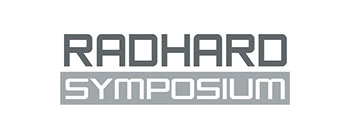Abstract
Autonomous Car Meets Cosmic Ray: A Perspective on Radiation Reliability
Challenges in Today’s and Tomorrow’s Automotive Systems
Victor Malherbe1, Philippe Roche1, Fady Abouzeid1, Jean-Marc Daveau1, Martin Duncan2
1 STMicroelectronics Crolles, France
2 STMicroelectronics Agrate, Italy
Abstract
The growing complexity of today’s automotive vehicles goes side by side with increasingly stringent and multifaceted safety requirements. Just like electromechanical systems in a car, semiconductor components now need to demonstrate high levels of reliability against a variety of failure modes, out of which radiation effects could arguably be among the most unpredictable at system level. While cosmic-ray induced errors may be rare at sea level, the sheer number of land vehicles in a manufacturer’s fleet can raise the odds of critical failures quite dramatically, which has led to the pervasion of functional-safety (FuSa) culture from nuclear or avionics industries – to just name a few – into the automotive world.
In this talk, we will thus explore some of the challenges associated with implementing reliable – relating to both safety and security – and increasingly complex automotive electronic systems, which aim to achieve autonomous driving by incremental improvements on driver-assistance features. Such systems rely heavily on the massive computing power made available by modern multi-core CPUs and GPUs, enabled by advanced CMOS technology nodes beyond planar bulk. We will give an overview of new trends in FinFET process and 3D integration, with the automotive roadmap increasingly turning toward such technologies to support the need for performance from advanced driver assistance systems (ADAS). In addition, we will present new approaches of model-based safety assessment (MBSA), which strive to derive safety metrics in a systematic, automated way, when previous methods typically relied on manual analyses or semi-automated fault injections.
Furthermore, beside digital systems, driver-assistance systems evidently make great use of sensor fusion data, among which photosensitive components are key. We will thus review some radiation effects in modern image sensor and lidar technologies, and their implications at system level. Finally, in light of modern trends in vehicle electrification, we will briefly discuss radiation effects in power electronics, with an emphasis on new generations of wide bandgap components in gallium nitride (GaN). In the global automotive reliability picture, such aspects ought not to be neglected, especially considering the potentially destructive nature of radiation failures in power components.
![[Translate to English:] [Translate to English:]](/fileadmin/uploads/intranet/events/radhard/2023/header-radhard2023.jpg)
